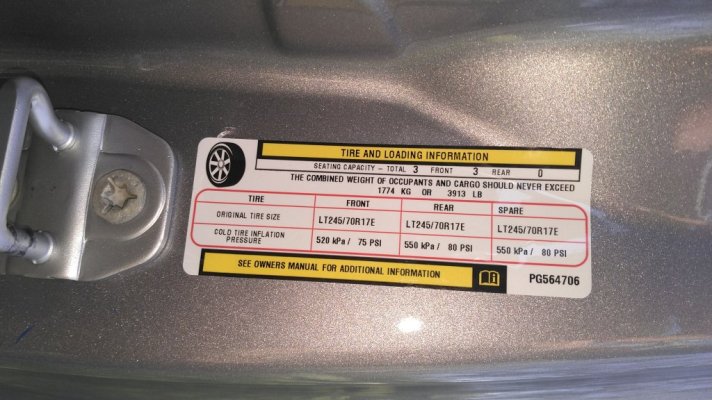Just sayin, look at all the manufacturers, and look up the speck, and make your own decision. I don't need someone who has a no load ability Bighorn saying that a 1/2 ton truck can under NO circumstances pull a fiver. Not only is it just an opinion, but it is also worth what it costs.
So, even if a person has a HD 3500 and is towing a 44" toy hauler just under the weight specs, doing 75/80 mph across the flatlands, I consider him more dangerous than some guy 200# overweight with a 1500.
This argument can and will go on forever, but never, and I reiterate, NEVER, say without qualification, that it's imposable for a 1/2 ton to pull a fiver.
The capacities of a truck are based not on strength of the truck, but on many parameters, and the manufacturers set those numbers at a level that removes their liability.
How do automakers come up with the tow rating on a new pickup truck? You might imagine it's a number calculated by engineers sitting at desks, a theoretical measure that's based on a truck's ideal capabilities. The truth is, every new model of truck goes through a rigorous set of real-world standardized tests to ensure that it can accelerate, turn and stop safely while towing the maximum amount recommended by the automaker. Here's everything involved in that strenuous set of tests.
Road & Track contributor
Jason Fenske visited Fiat Chrysler's Chelsea Proving Grounds in Michigan to see what goes into the set of tests known as SAE J2807, the certification process for vehicle tow rating. For each test, the truck must be towing the maximum load recommended by the manufacturer.
The acceleration test requires single-wheel trucks to do 0-30 mph in 12 seconds, 0-60 mph in 30 seconds, and 40-60 mph in 18 seconds; those times increase to 14, 35, and 21 seconds, respectively, for dually models. Those times might sound like an eternity in the car world, but for a vehicle pulling the equivalent of 16 new Miatas, it's not bad. The truck must be able to brake from 20 mph to zero in 45 feet with trailer brakes, or 80 feet without.
In terms of handling, the truck needs to be able to maintain understeer as it accelerates on a circular skid pad from 0.1 g to 0.3 g of lateral acceleration. This ensures the truck won't lose control of its rear end (and therefore the trailer) during hard cornering scenarios. In a quick direction-change sway test, the trailer must remain stable and secure without excessive oscillation.
The final test is called the Highway Grade / Davis Dam test, which wasn't performed in Fenske's video. It requires that the truck be able to tow its maximum trailer weight up a specific 11.4-mile uphill stretch of road in Arizona. For this test to be run correctly, it must be at least 100 degrees Fahrenheit outside, and the air conditioning must be on its maximum setting using outside air. The truck must maintain a minimum speed of 40 mph and it can't throw any error codes or burn any fluids during the test.
So, even if a person has a HD 3500 and is towing a 44" toy hauler just under the weight specs, doing 75/80 mph across the flatlands, I consider him more dangerous than some guy 200# overweight with a 1500.
This argument can and will go on forever, but never, and I reiterate, NEVER, say without qualification, that it's imposable for a 1/2 ton to pull a fiver.










